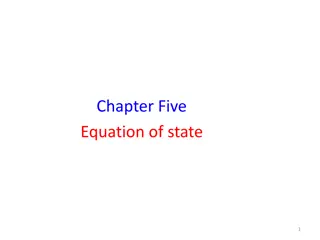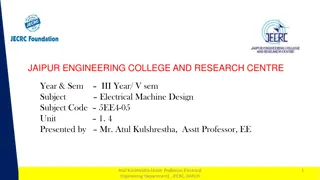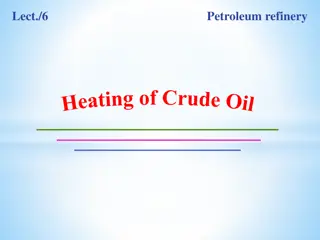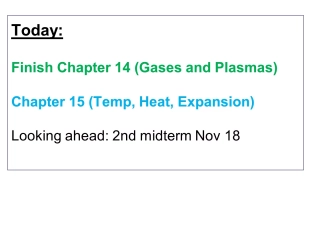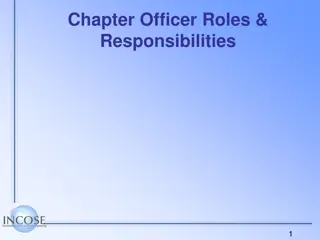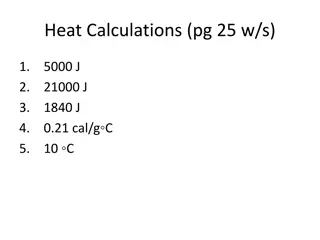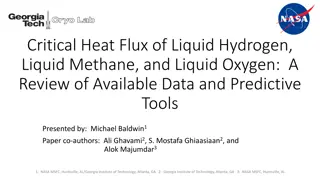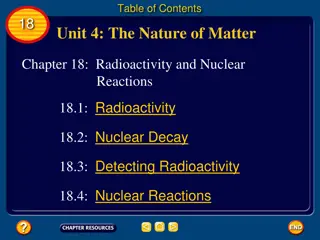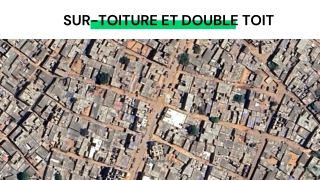Chapter Two Governing Equations of Heat Conduction
This compilation covers examples and governing equations of heat conduction, including boundary conditions and scenarios involving one-dimensional conduction in various structures. It explores scenarios like steady-state conditions in a plane wall, heat conduction along a pipeline, and temperature distribution in a wall with internal energy generation. The content provides insights into calculating heat flux, temperature variation, and energy generation rates in different scenarios.
Download Presentation
Please find below an Image/Link to download the presentation.
The content on the website is provided AS IS for your information and personal use only. It may not be sold, licensed, or shared on other websites without obtaining consent from the author. Download presentation by click this link. If you encounter any issues during the download, it is possible that the publisher has removed the file from their server.
Presentation Transcript
Chapter Two Governing Equations of Heat Conduction Examples Prepared By: Dawit M.
Heat Conduction Governing Equations In Rectangular Coordinates: In Cylindrical Coordinates: In Spherical Coordinates:
Heat Conduction Governing Equations In Rectangular Coordinates: In Cylindrical Coordinates: In Spherical Coordinates:
Example 1: Use of Fouriers Law 1) Consider steady-state conditions for one- dimensional conduction in a plane wall having a thermal conductivity k = 50 W/m K and a thickness L = 0.25 m, with no internal heat generation. Determine the heat flux and the unknown quantity for each case and sketch the temperature distribution, indicating the direction of the heat flux.
Example 2: 1D Heat Conduction from Pipeline 2. Sections of the trans-Alaska pipeline run above the ground and are supported by vertical steel shafts (k = 25 W/m K) that are 1 m long and have a cross-sectional area of 0.005 m2. Under normal operating conditions, the temperature variation along the length of a shaft is known to be governed by an expression of the form: T = 100 - 150x + 10x2 where T and x have units of C and meters, respectively. Temperature variations are small over the shaft cross section. Evaluate the temperature and conduction heat rate at the shaft pipeline joint (x = 0) and at the shaft ground interface (x = 1 m). Explain the difference in the heat rates.
Example 3: Temperature Distribution in Plane Wall in Various Conditions (Cases) 3) One-dimensional, steady-state conduction with uniform internal energy generation occurs in a plane wall with a thickness of 50 mm and a constant thermal conductivity of 5 W/m-K. For these conditions, the temperature distribution has the form T(x) = a + bx + cx2. The surface at x = 0 has a temperature of T(0) = To = 1200C and experiences convection with a fluid for which T = 200C and h = 500 W/m2K. The surface at x = L is well insulated.
Contd (a) Applying an overall energy balance to the wall, calculate the volumetric energy generation rate q. (b) Determine the coefficients a, b, and c by applying the boundary conditions to the prescribed temperature distribution. (c) Consider conditions for which the convection coefficient is halved, but the volumetric energy generation rate remains unchanged. Determine the new values of a, b, and c. (Hint : recognize that T(0) is no longer 1200C) (d) Under conditions for which the volumetric energy generation rate is doubled, and the convection coefficient remains unchanged (h = 500 W/m2K), determine the new values of a, b, and c.
Example 4: Use of Heat Equation in Cylindrical Coordinates 4) Passage of an electric current through a long conducting rod of radius ri and thermal conductivity kr results in uniform volumetric heating at a rate of q. The conducting rod is wrapped in an electrically non conducting cladding material of outer radius ro and thermal conductivity kc, and convection cooling is provided by an adjoining fluid. (a) conditions, write appropriate forms of the heat equations for the rod and cladding. Express boundary conditions for the solution of these equations. For steady-state and 1D appropriate
Example 5: Use of Heat Equation in Cylindrical Coordinates 5) A 2-kW resistance heater wire with thermal conductivity k = 15 W/m C, diameter D = 0.4 cm, and length L = 50 cm is used to boil water by immersing it in water (Fig. 2 19). Assuming the variation of the thermal conductivity of the wire with temperature to be negligible, obtain the differential equation that describes the variation of the temperature in the wire during steady operation.
Example 6: Use of Heat Equation in Spherical Coordinates 6) A spherical metal ball of radius R is heated in an oven to a temperature of 600 F throughout and is then taken out of the oven and allowed to cool in ambient air at 75 F by convection and radiation (Fig. 2 20). The thermal conductivity of the ball material is known to vary linearly with temperature. Assuming the ball is cooled uniformly from the entire outer surface; obtain the differential equation that describes the variation of the temperature in the ball during cooling.
Any Questions? Thank You!







